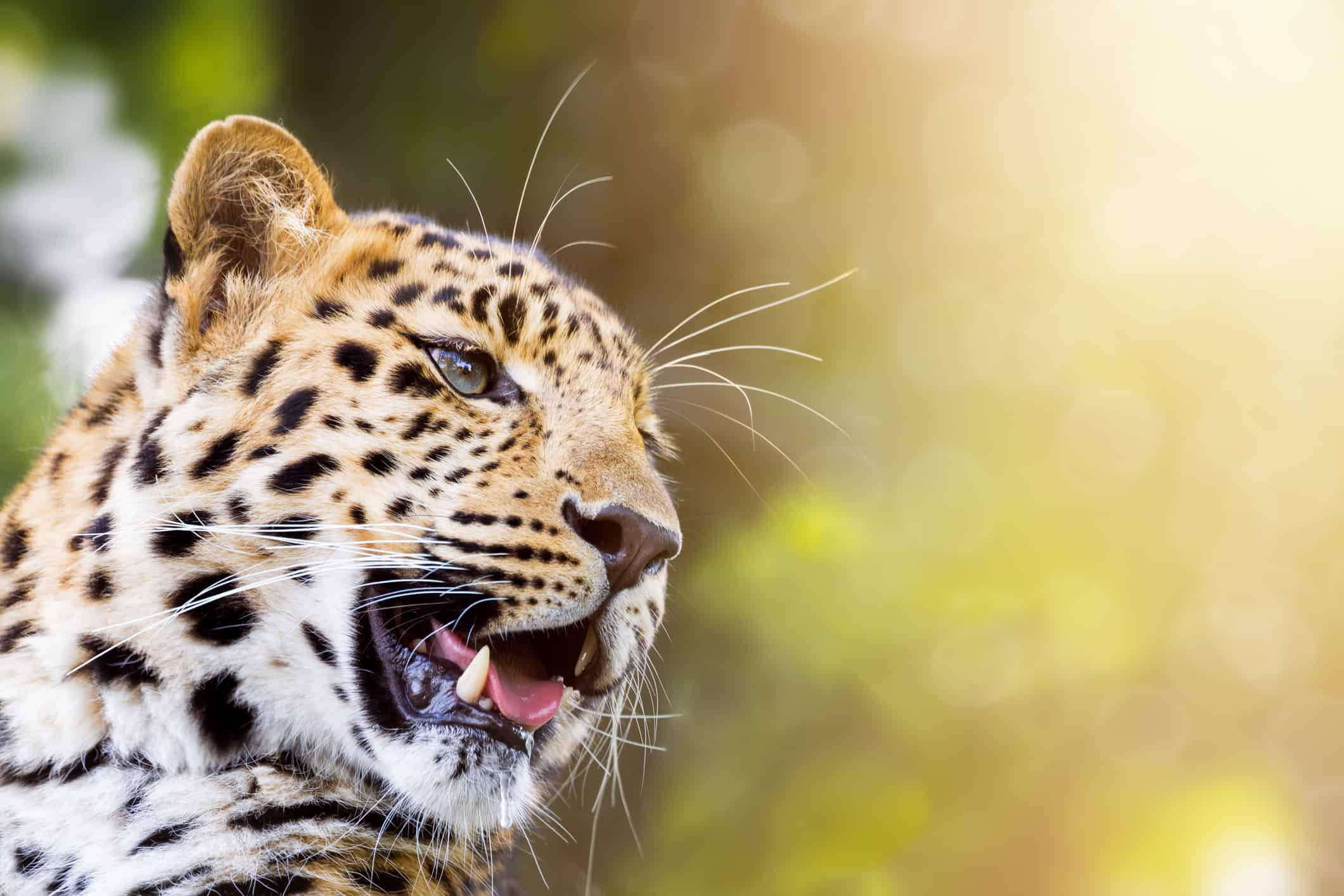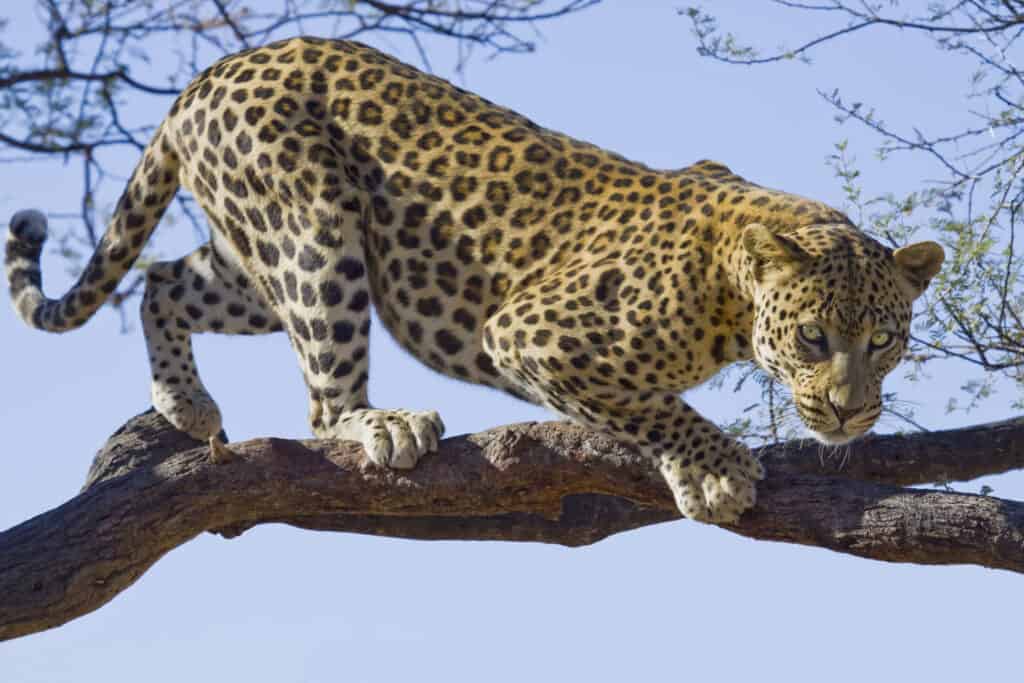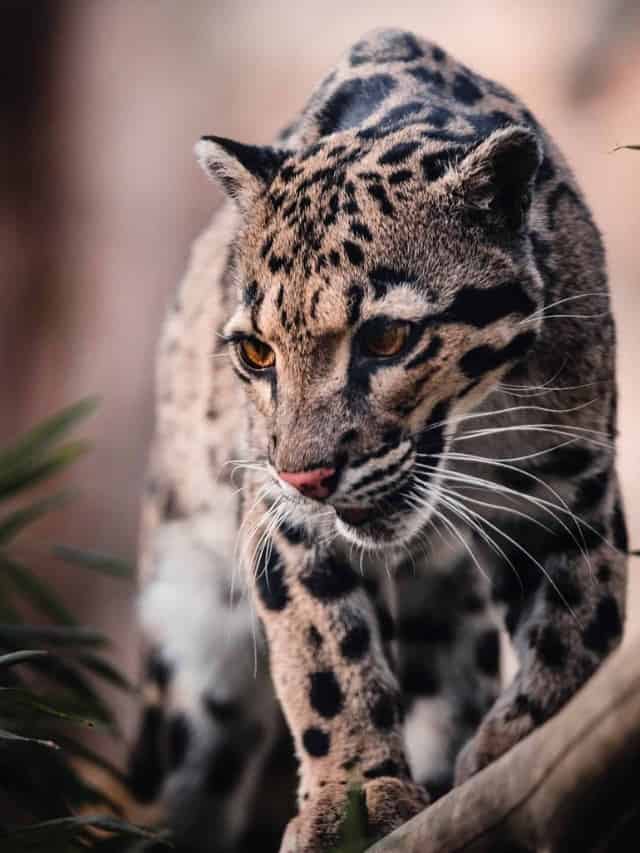Continue reading for our analysis...

Perhaps the martial eagle in this footage thought that their size and power would protect them from any predators but sadly, they were wrong! We see a superb hunter, namely a leopard, sneak up from behind and capture the unsuspecting eagle in its powerful jaws. This very unusual event was captured in sub-Saharan Africa where there are many large bird species, including the ostrich.
Incredible Martial Eagles
The awesome martial eagle is the largest eagle species in the world with a wingspan of up to 8.5 feet with a distinctive speckled chest. They can be seen in the savannah and thornbush areas of Africa in areas to the south of the Sahara ranging from Senegal to Somalia and also further south to the Cape. They frequent the Kruger National Park in the Lower Sabie area.

The local name of Martial eagles in South Africa is lammervanger (or “lamb catcher”).
©Theodore Mattas/Shutterstock.com
Martial eagles weigh up to 14 pounds and can knock a fully-grown human off their feet! Because of their huge size, they need to eat a lot, and often hunting is a big part of their lives. They commonly catch guineafowl, as well as bustards and other poultry and lizards. However, they are also partial to mammals and some of these are large! A Martial eagle will tackle a hyrax or even a small antelope. There are reports of these eagles dining on calves, goats, and lambs too.
They like to spend most of their time either perched in trees or soaring in the air surveying the land below for their next meal. It is highly unusual for them to be on the ground for long periods of time because it makes them vulnerable to predators as this individual found out.
Sneaky Leopard
Leopards are stunning big cats found across sub-Saharan Africa and southern Asia. They are opportunistic hunters and are adept at exploiting situations that they find themselves in. The leopard in this video cannot believe their luck.

This is a wild African leopard looking down from a branch of a tree.
©iStock.com/lightstock
Leopards hunt birds, reptiles, and mammals and their very varied diet allows them to evade the intense competition for single food sources.
In this footage, the eagle has clearly failed to spot the leopard who is perfectly camouflaged behind a small tree. As the eagle is distracted by another smaller bird breaking cover and flying away, the leopard charges through the bush and pounces on their prey in one movement. Usually, a leopard will drag their prey to a safe space, such as dense vegetation, to eat it in peace. But oddly, this leopard leaves the carcass on the ground and walks away. However, in nature, nothing is wasted so it was probably not too long before scavengers arrived to feast on it.
Is This Normal Behavior?

It is not an everyday occurrence for a leopard to catch an eagle from the air!
©Soren Wolf/Shutterstock.com
While large avians may not be the everyday dinner for big cats like leopards, it does happen in the wild. Despite the quick reflexes of the eagle, a well-timed ambush is the key to victory for the feline.
Leopards will normally hunt and stalk weaker, slower prey. But if food is scarce and the right opportunity presents itself, they will not hesitate to strike!
Thank you for reading! Have some feedback for us? Contact the AZ Animals editorial team.







